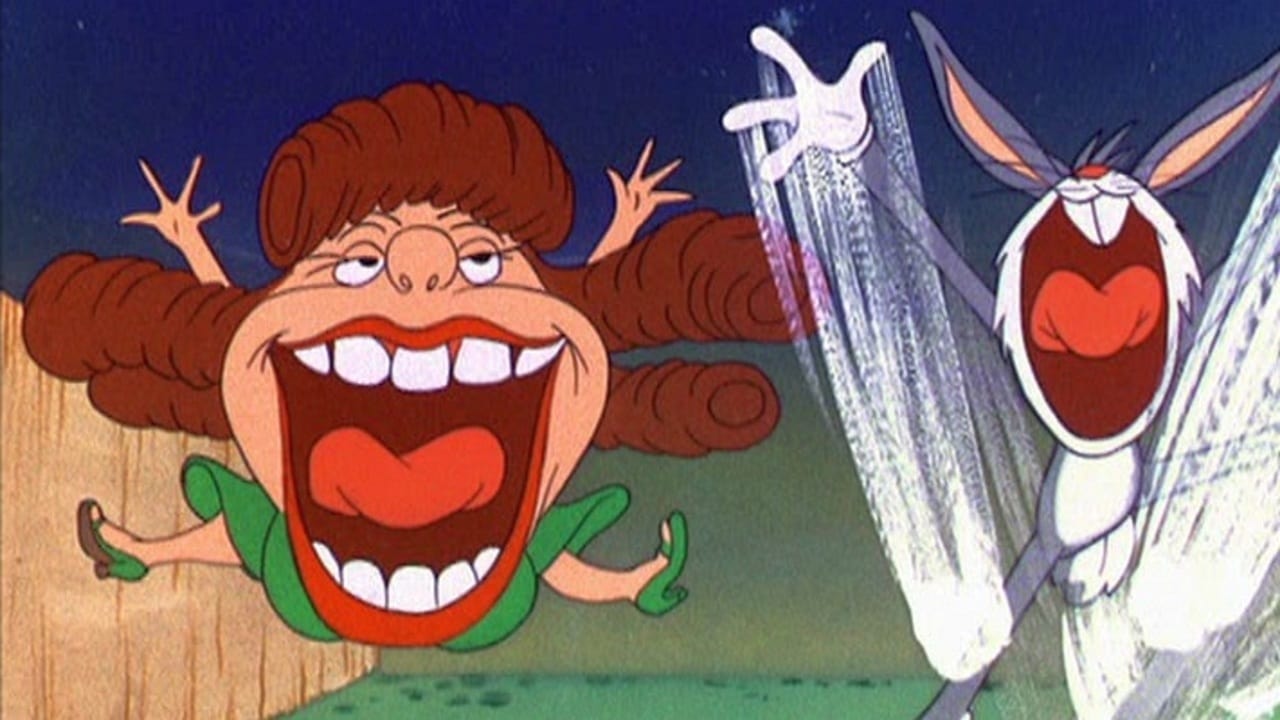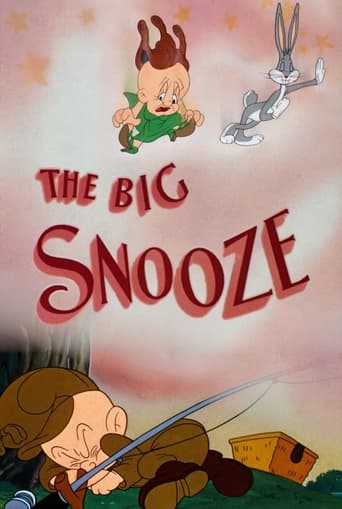

. . . with this 1940s animated short, THE BIG SNOOZE. Bugs Bunny takes on the Humphrey Bogart part, which of course leaves the Lauren Bacall role to Elmer Fudd. Though Mr. Fudd looks better in a green cocktail dress than Ms. Bacall, that may be a moot point, given SLEEP's monochromatic nature. Whereas the live-action Bogart flick involved him and Bacall telling each other an increasingly complicated bedtime murder mystery in which even the Real Life movie director admitted he could not figure out exactly who killed whom, SNOOZE finds Bugs invading Elmer's retirement dreams with packs of bunnies and wolves until Elmer's not sure which bathroom to use in North Carolina. Since Elmer logs on and off to Reality here like a schizophrenic on an LSD trip, there's no need for SNOOZE to introduce such tomfoolery as SLEEP's hidden cameras. Elmer appears totally nude from 5:08 through 5:11 of SNOOZE, which is a lot more daring than you can credit Bacall for anything she doffs in SLEEP. However, both efforts boil down to yawners.
... View MoreBob Clampett's final short for Warner Bros. is a classic Bugs & Elmer cartoon. Elmer's tired of the routine they're in where he chases Bugs but never wins. So he tears up his contract and quits the cartoon! Bugs, determined to get Elmer back, invades his dreams (like Freddy Krueger) leading to some surreal and wacky imagery. The music is bouncy and cheerful. The voice work from Mel Blanc and Arthur Q. Bryan is expectedly flawless. The animation is beautiful with well-drawn characters and backgrounds and lovely Technicolor. The dream stuff is amazing. Funny gags, lines, and fourth-wall breaking makes this one any Looney Tunes fan will want to see.
... View MoreIn this last Bob Clampett Looney Tunes short, Elmer Fudd is thoroughly appalled by the treatment he always winds up getting from Bugs Bunny, so he decides enough is enough, tears up his Warner Brothers contract and commits himself to fishing for the rest of his days. Bugs is mortified of course (for his own job security mind you) and when he finds Elmer dreaming, he takes a sleeping pill and enters his pleasant dream to turn it into a nightmare. This is a hilarious if a wee bit surreal cartoon that can be seen on Disc 1 of the Looney Tunes Golden Collection Volume 2. It also features an optional commentary by animator Bill Melendez that is pretty good.My Grade: A
... View MoreI don't know any of the details surrounding Bob Clampett's departure from Warner Bros., but in this, his last cartoon for them, was one of the weirdest from a long list of strange entries from him. I don't think he got along well with the new studio imposed producer, Edward Selzer. Leon Schlesinger, the previous one, and the creator of Looney Tunes and Merrie Melodies, let him have all the freedom he needed with zany, wild cartoons as the result. Some, like "Porky in Wackyland" and "The Daffy Doc" are considered by many cartoon historians to be important for the bold liberties he took with art and the use of space. He did things that had never been done before, but Warner Bros. bought out Schlesinger for $1,000,000 and Clampett's star never quite shone as brightly as it did in those heady days.At the beginning of this cartoon, then, it is significant that we see that Elmer Fudd is becoming disenchanted with his cartoon contract with "Mr. Warner" and tears it up in frustration after once again being the fall guy for Bugs Bunny. What follows is a surreal sequence after Elmer falls asleep. Bugs uses "nightmare paint" to make him dream so Bugs can manipulate him in his slumber to save both of their careers. We have the usual assortment of corny Clampett gags mixed in with some stunning scenes that must have had everyone back in 1946 scratching their heads a little, wondering if Clampett had finally lost his mind. The price that innovative people sometimes have to pay is that not everyone will get it, and I don't think Selzer was anywhere near "getting it", so Clampett got the door.
... View More